The Lesser Sunda Islands, located in Indonesia’s eastern region, are a group of islands that stretch from Bali to Timor. This region is known for its unique and diverse environment, with a variety of landscapes ranging from volcanic mountains to coral reefs.
The islands experience a tropical climate, with temperatures ranging from 25 to 30 degrees Celsius throughout the year. The region is home to a wide range of animal species, including the Komodo dragon, which is native to the islands.
Other notable animals include various species of birds, reptiles, and marine life. The Lesser Sunda Islands are a fascinating destination for nature lovers and adventurers alike, offering a glimpse into the natural wonders of Indonesia’s eastern region.
.
Types Of Ants In Lesser Sunda Islands, Indonesia
The Types Of Ants In Lesser Sunda Islands, Indonesia are listed here: Coccid-Tending Ants, Army Ants, Trap-Jaw Ants, Anonychomyrma, Anoplolepis, Funnel Ants, Brachyponera, Calyptomyrmex, Carpenter And Sugar Ants, Sneaking Ants, Marauder Ants, Cataulacus, Centromyrmex, Army Ants, Cladomyrma, Acrobat Ants, Cryptic Ants, Diacamma, Dolly Ants, Ectomomyrmex, Emeryopone, Epelysidris, Euponera, Harpegnathos, Crypt Ants, Razorjaw Ants, Shield Ants, Mesoponera, Trailing Pharaoh And Timid Ants, Myopias, Myopopone, Mite-Eating Ants, Myrmoteras, Mystrium, Crazy Ants, Trap-Jaw Ants, Odontoponera, Oecophylla, Parvaponera, Platythyrea, Spiny Ants, Porthole Ants, Pristomyrmex, Pseudoneoponera, Recurvidris, Sphinctomyrmex, Miniature Trap-Jaw Ants, Tapinoma, Pavement Ants, Old World Slender Ants, Pharaoh Ants.
If you’ve found some other ants in this region, contact us, and we will add them to the list!
1) Coccid-Tending Ants, Acropyga
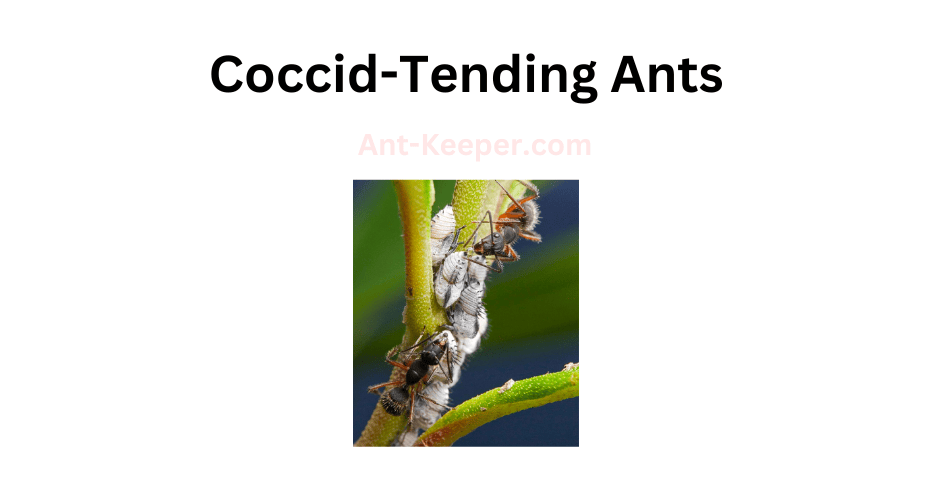
Coccid-tending ants are a group of ants that have a mutualistic relationship with coccids, also known as scale insects.
These ants protect and care for the coccids, which in turn provide the ants with a sugary substance called honeydew.
Coccid-tending ants are typically small in size, ranging from 2 to 5 millimeters in length.
They have a reddish-brown coloration and a slender body shape.
These ants are commonly found in forests and grasslands, where they build nests in soil or under rocks.
The relationship between coccid-tending ants and coccids is a classic example of mutualism.
The ants protect the coccids from predators and parasites, and also move them to new feeding sites when necessary.
In return, the coccids secrete honeydew, which the ants consume as a source of energy.
Coccid-tending ants have been observed to actively farm and cultivate coccids, moving them to new locations and even pruning the plants on which they feed to encourage the growth of new coccids.
This behavior has been shown to increase the overall productivity of the ant-coccid mutualism.
Overall, coccid-tending ants are an important component of many ecosystems, playing a key role in the maintenance of plant and insect populations.
Their mutualistic relationship with coccids highlights the complex and interconnected nature of ecological systems.
2) Army Ants, Aenictus
Army ants are a type of ant that belong to the subfamily Dorylinae.
They are known for their aggressive behavior and their ability to form large colonies that can contain up to several million individuals.
Army ants are found in tropical and subtropical regions around the world, and they play an important role in the ecosystems where they live.
One of the most distinctive features of army ants is their nomadic lifestyle.
Unlike other ants that build permanent nests, army ants are constantly on the move, searching for food and new nesting sites.
They are also known for their impressive hunting skills.
When they come across prey, they swarm over it in large numbers, overwhelming it with their sheer numbers and powerful jaws.
Army ants are also social insects, with a complex hierarchy that determines the roles of each individual in the colony.
The queen is the largest ant in the colony and is responsible for laying eggs.
The workers are responsible for foraging, caring for the young, and defending the colony.
The soldiers are larger and have stronger jaws, which they use to protect the colony from predators.
Despite their aggressive behavior, army ants are an important part of many ecosystems.
They help to control the populations of other insects and small animals, and they provide food for larger predators such as birds and mammals.
In some cultures, army ants are even used as a source of food for humans.
Overall, army ants are fascinating creatures that have adapted to life in some of the most challenging environments on Earth.
Their nomadic lifestyle, impressive hunting skills, and complex social structure make them one of the most interesting species of ants in the world.
3) Trap-Jaw Ants, Anochetus
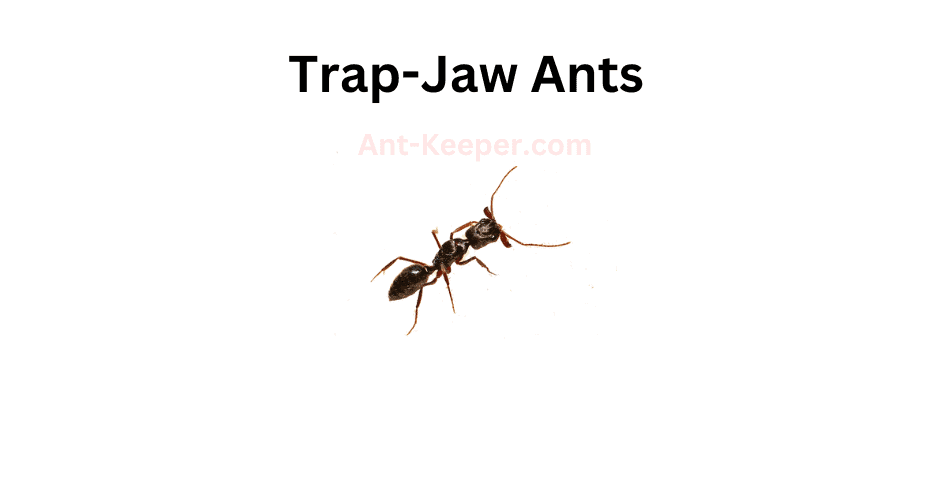
Trap-jaw ants are a species of ants that belong to the genus Odontomachus.
These ants are known for their unique and powerful mandibles, which they use to capture prey and defend their colonies.
The mandibles of trap-jaw ants are capable of closing at incredible speeds, reaching up to 140 miles per hour.
This allows them to snap their jaws shut with incredible force, which can stun or kill their prey.
Trap-jaw ants are found in a variety of habitats, including forests, grasslands, and deserts.
They are typically active during the day and are known to be highly territorial.
These ants are also known for their ability to jump, which they use to escape danger or to capture prey.
Trap-jaw ants are omnivorous, meaning that they eat both plant and animal matter.
They are known to feed on a variety of insects, including other ants, as well as nectar and other sweet substances.
These ants are also known to be scavengers, feeding on dead insects and other organic matter.
The colonies of trap-jaw ants are typically small, with only a few hundred individuals.
However, they are highly organized and have a strict social hierarchy.
The queen is the largest member of the colony and is responsible for laying eggs.
The workers, which are all female, are responsible for foraging, caring for the young, and defending the colony.
Overall, trap-jaw ants are fascinating creatures that have evolved unique adaptations to help them survive in their environments.
Their powerful mandibles and jumping abilities make them formidable predators, while their social organization allows them to work together to protect their colonies and ensure their survival.
4) Anonychomyrma
Anonychomyrmabe is a species of ant that belongs to the Formicidae family.
These ants are known for their unique physical characteristics, including their elongated mandibles and slender bodies.
They are typically found in forested areas and are known to be active during the day.
One of the most interesting aspects of Anonychomyrmabe is their social behavior.
They live in colonies that can range in size from a few dozen to several hundred individuals.
Within these colonies, there is a strict hierarchy, with the queen ant at the top.
The queen is responsible for laying eggs, while the other ants in the colony take care of the young and gather food.
Anonychomyrmabe is an omnivorous species, meaning that they eat both plants and animals.
They are known to feed on a variety of insects, as well as fruits and seeds.
They are also known to engage in a behavior called trophallaxis, where they exchange food with other members of the colony.
Despite their small size, Anonychomyrmabe plays an important role in their ecosystem.
They help to control the populations of other insects and contribute to the nutrient cycling process by breaking down organic matter.
Overall, Anonychomyrmabe is a fascinating species of ant that exhibits unique physical and social behaviors.
Their importance in their ecosystem highlights the importance of understanding and protecting all species, no matter how small they may be.
5) Anoplolepis
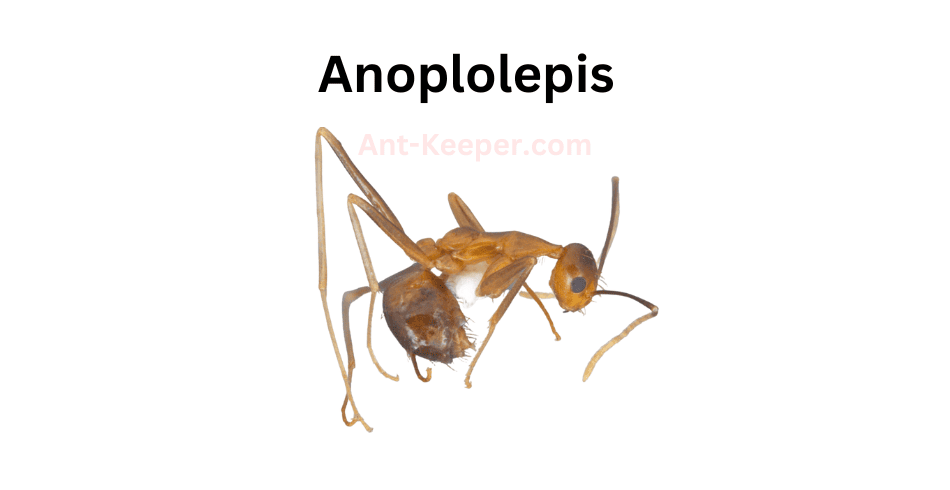
Anoplolepis is a genus of ants that belongs to the subfamily Formicinae.
The most well-known species in this genus is Anoplolepis gracilipes, commonly known as the yellow crazy ant.
These ants are known for their aggressive behavior and ability to form large colonies.
Anoplolepis ants are small in size, measuring between 2-3 mm in length.
They have a yellowish-brown coloration and a slender body shape.
Their mandibles are long and curved, which they use to capture prey and defend their colony.
These ants are omnivorous, feeding on a variety of food sources including insects, nectar, and honeydew.
They are also known to be attracted to sweet substances and can become a nuisance in households.
Anoplolepis ants are highly adaptable and can thrive in a variety of environments, including forests, grasslands, and urban areas.
They are known to form supercolonies, which can consist of millions of individuals.
These supercolonies can have a significant impact on the ecosystem, as they can displace native ant species and disrupt the balance of the food chain.
Overall, Anoplolepis ants are fascinating creatures with unique behaviors and adaptations.
While they can be a nuisance in households, they play an important role in the ecosystem and are an important subject of study for scientists.
6) Funnel Ants, Aphaenogaster
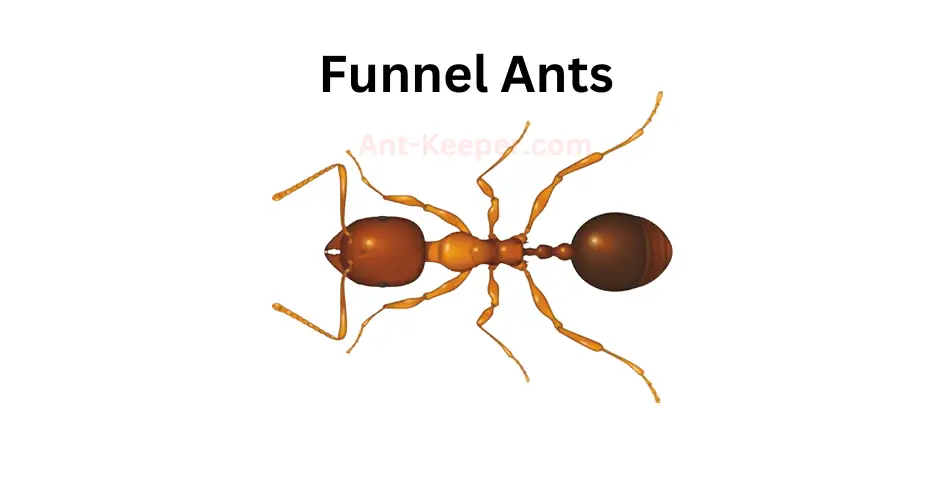
The Funnel Ants, also known as Aphaenogaster ants, are a species of ants that are commonly found in various habitats around the world.
These ants are known for their unique nesting behavior, where they construct funnel-shaped nests that are typically located in soil or leaf litter.
The Funnel Ants are relatively small in size, with workers measuring between 3-5mm in length.
They are typically reddish-brown in color and have a slender body shape.
These ants are known for their strong mandibles, which they use to collect and transport food back to their nests.
One of the most interesting aspects of the Funnel Ants is their nesting behavior.
These ants construct funnel-shaped nests that are typically located in soil or leaf litter.
The entrance to the nest is narrow and funnel-shaped, which helps to protect the colony from predators and other threats.
Inside the nest, the ants create a series of chambers and tunnels that are used for different purposes, such as storing food, caring for the brood, and housing the queen.
The Funnel Ants are omnivorous, meaning that they feed on both plant and animal matter.
They are known to collect a wide variety of food items, including seeds, insects, and other small invertebrates.
These ants are also known to tend to aphids, which they use for their honeydew secretion.
Overall, the Funnel Ants are a fascinating species of ants that are known for their unique nesting behavior and omnivorous diet.
They play an important role in their ecosystems, helping to control populations of other insects and contributing to nutrient cycling in the soil.
7) Brachyponera
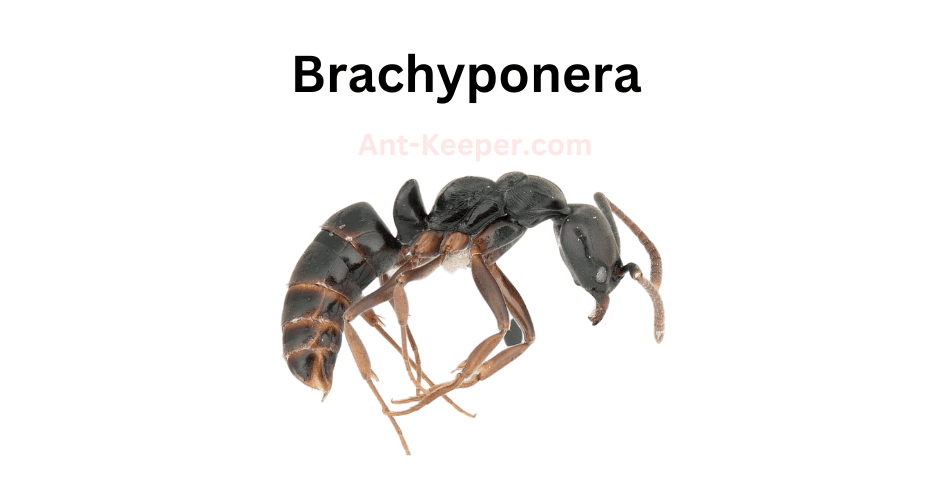
Brachyponera is a genus of ants belonging to the subfamily Ponerinae.
One of the species in this genus is Brachyponera sennaarensis, commonly known as the Sennaar ant.
These ants are relatively large, measuring up to 12mm in length, and are known for their aggressive behavior.
The workers of Brachyponera sennaarensis are dark brown in color and have a shiny exoskeleton.
They have a powerful sting and are known to attack other insects and even small vertebrates.
These ants are also known to forage for food in large groups, and can quickly overwhelm their prey.
Brachyponera sennaarensis is found in a variety of habitats, including forests, grasslands, and deserts.
They are known to build their nests in soil, under rocks, and in tree trunks.
These ants are also known to be nocturnal, and are most active during the night.
Despite their aggressive behavior, Brachyponera sennaarensis is an important part of the ecosystem.
They help to control the population of other insects and play a vital role in the food chain.
However, their powerful sting and aggressive behavior make them a potential danger to humans and other animals.
8) Calyptomyrmex
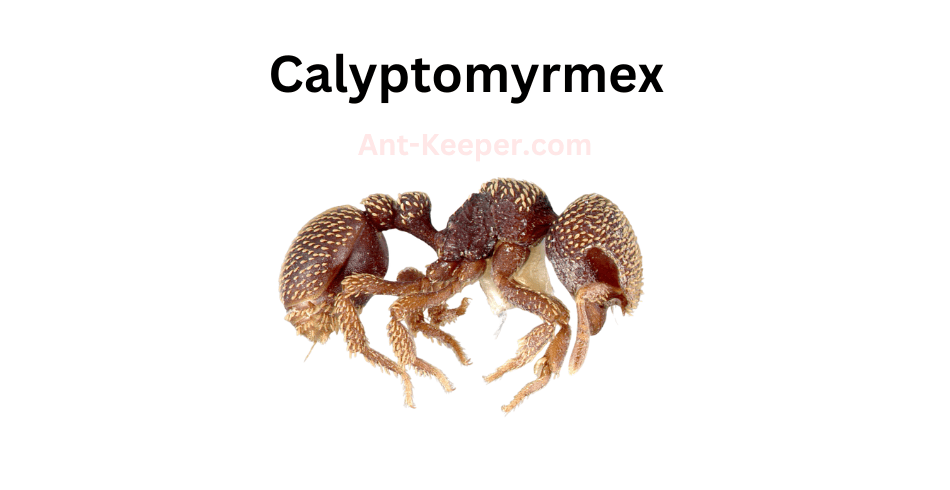
Calyptomyrmex is a genus of ants belonging to the subfamily Myrmicinae.
These ants are known for their unique morphology, which includes a distinctively shaped head and a flattened, shield-like structure on the thorax.
The genus is relatively small, with only a few known species.
Calyptomyrmex ants are typically found in forested areas, where they nest in soil or leaf litter.
They are known to be predatory, feeding on other insects and small invertebrates.
These ants are also known to have a mutualistic relationship with certain species of plants, where they protect the plants from herbivores in exchange for food and shelter.
One of the most interesting aspects of Calyptomyrmex ants is their social behavior.
These ants are highly organized, with a clear division of labor among the members of the colony.
The queen is responsible for laying eggs, while the workers are responsible for foraging, caring for the young, and defending the colony.
Overall, Calyptomyrmex ants are fascinating creatures that play an important role in their ecosystems.
Their unique morphology, predatory behavior, and social organization make them a subject of interest for researchers and nature enthusiasts alike.
9) Carpenter And Sugar Ants, Camponotus

Carpenter ants and sugar ants are two common species of ants found in many regions of the world.
Carpenter ants are known for their ability to excavate wood and create nests within it.
They are typically larger in size than sugar ants and have a black or dark brown coloration.
Carpenter ants are also known for their strong mandibles, which they use to chew through wood and other materials.
Sugar ants, on the other hand, are smaller in size and have a yellow or brown coloration.
They are named for their preference for sugary foods and are often found in kitchens and other areas where food is stored.
Sugar ants are also known for their ability to form large colonies, with thousands of individual ants working together to gather food and care for their young.
Both carpenter ants and sugar ants play important roles in their ecosystems.
Carpenter ants help to break down dead wood and other plant material, which helps to recycle nutrients back into the soil.
Sugar ants help to disperse seeds and pollinate plants, which helps to maintain healthy ecosystems.
However, both species can also be pests when they invade human homes and buildings.
Carpenter ants can cause damage to wooden structures, while sugar ants can contaminate food and be a nuisance to homeowners.
It is important to take steps to prevent ant infestations and to control them if they do occur, in order to protect both human health and the health of the environment.
10) Sneaking Ants, Cardiocondyla
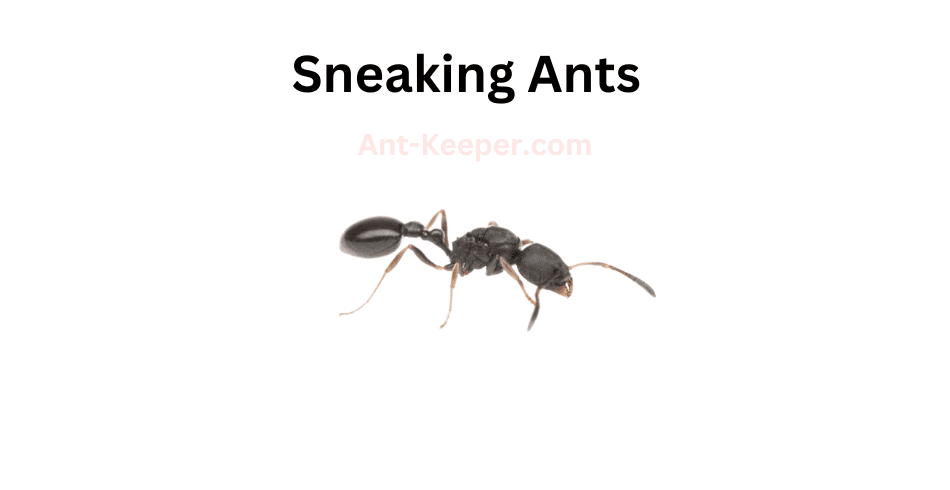
Sneaking Ants, also known as Camponotus obscuripes, are a species of ant that are commonly found in forested areas.
These ants are known for their ability to move quietly and quickly, making them difficult to detect.
Sneaking Ants are typically black or dark brown in color and range in size from 5 to 12 millimeters in length.
They have a distinctive, flattened head and a narrow waist, which helps them to navigate through tight spaces.
One of the most interesting aspects of Sneaking Ants is their behavior.
These ants are known for their ability to sneak up on other insects and steal their food.
They are also known to raid the nests of other ant species, taking their eggs and larvae back to their own colony to raise as their own.
Sneaking Ants are omnivorous, meaning they eat both plant and animal matter.
They have been observed feeding on nectar, honeydew, and small insects.
They are also known to scavenge for food, often taking advantage of the leftovers from other insects.
In terms of reproduction, Sneaking Ants have a unique system.
The colony is typically led by a single queen, who is responsible for laying eggs.
However, there are also a number of worker ants who are capable of laying eggs as well.
These eggs are typically unfertilized and produce male ants, which are used for mating purposes.
Overall, Sneaking Ants are a fascinating species with unique behaviors and adaptations.
Their ability to move quietly and quickly makes them a formidable predator, and their omnivorous diet allows them to thrive in a variety of environments.
11) Marauder Ants, Carebara
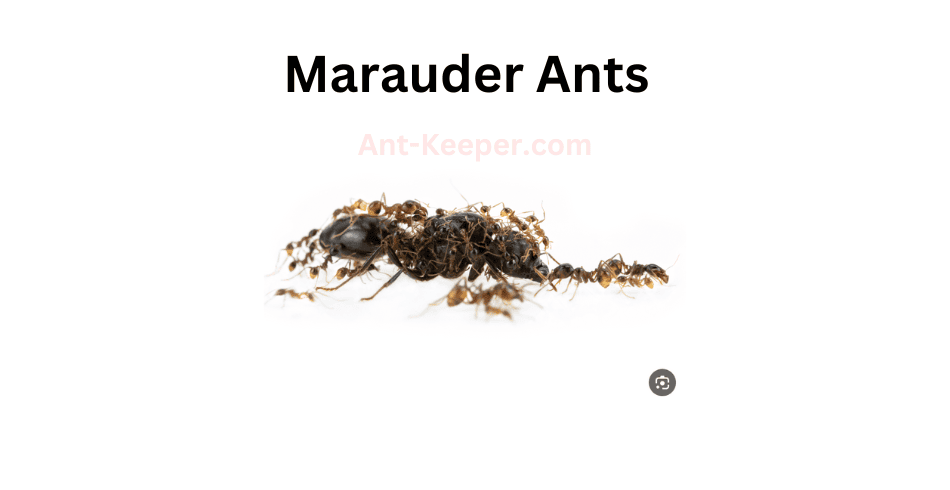
Marauder ants are a species of ants known for their aggressive behavior and large colony sizes.
They are typically found in tropical and subtropical regions, where they inhabit a variety of habitats including forests, grasslands, and urban areas.
These ants are known for their ability to raid other ant colonies and steal their resources, including food and brood.
They have powerful mandibles that allow them to overpower other ants and carry their prey back to their own colony.
Marauder ants are also known for their ability to adapt to changing environments.
They can quickly adjust their foraging patterns and nesting sites in response to changes in their surroundings, allowing them to thrive in a variety of habitats.
Despite their aggressive behavior, marauder ants play an important role in their ecosystems.
They help to control populations of other insects and contribute to nutrient cycling in the soil.
Overall, marauder ants are a fascinating species of ants that have adapted to thrive in a variety of environments.
Their aggressive behavior and large colony sizes make them a formidable force in the ant world.
12) Cataulacus
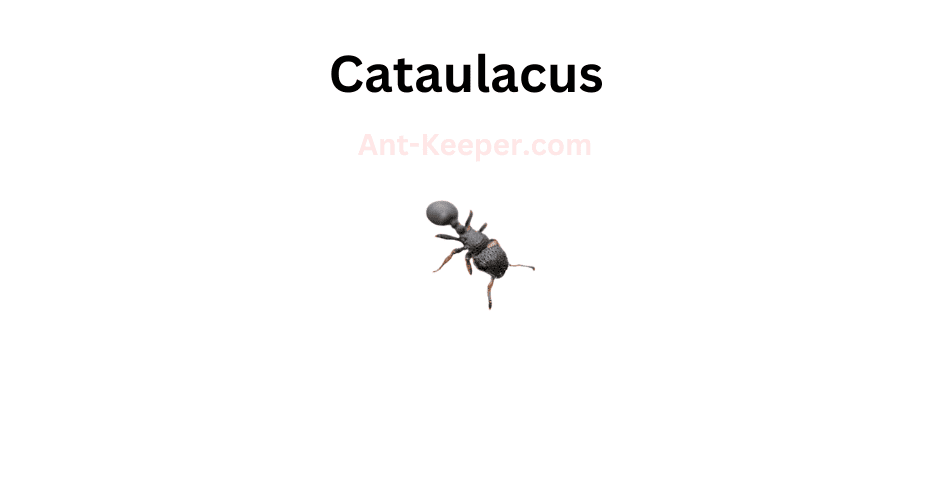
Cataulacus is a genus of ants that belongs to the family Formicidae.
These ants are known for their unique morphology and behavior.
They are small in size, measuring between 2 and 10 millimeters in length.
Cataulacus ants have a slender body with a narrow waist and long legs.
Their antennae are also long and thin, with 12 segments.
Cataulacus ants are primarily arboreal, meaning they live in trees and other vegetation.
They build their nests in hollow twigs, branches, and leaves.
These ants are also known for their ability to camouflage themselves by covering their bodies with debris and plant material.
Cataulacus ants are omnivorous, meaning they eat both plant and animal matter.
They feed on nectar, honeydew, and other sugary substances, as well as insects and other small invertebrates.
These ants are also known to tend to aphids and other insects that produce honeydew.
Cataulacus ants are social insects, living in colonies that can range in size from a few dozen to several hundred individuals.
The colony is typically led by a queen, who is responsible for laying eggs.
The workers, which are sterile females, are responsible for foraging, caring for the young, and defending the colony.
Overall, Cataulacus ants are fascinating creatures that play an important role in their ecosystem.
Their unique morphology and behavior make them a subject of interest for scientists and nature enthusiasts alike.
13) Centromyrmex
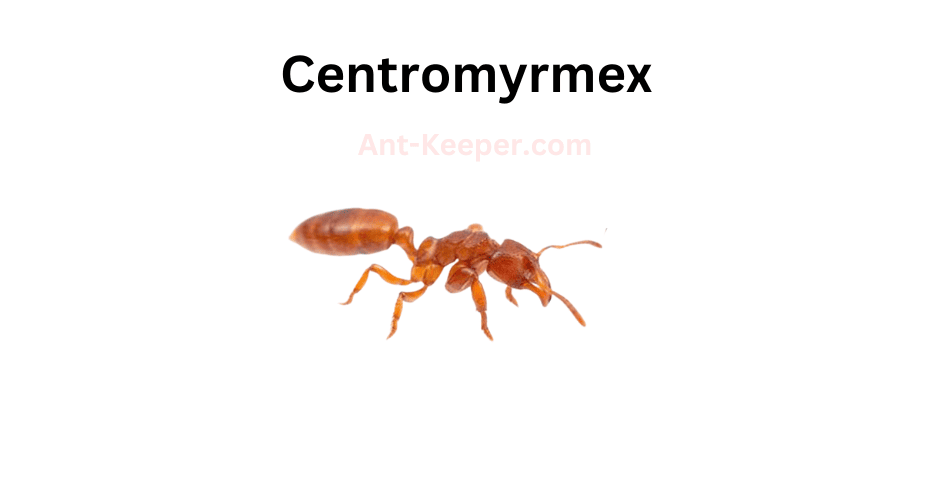
Centromyrmex is a genus of ants that belongs to the family Formicidae.
These ants are known for their unique morphology and behavior.
They are typically found in tropical regions and are known to inhabit forested areas.
Centromyrmex ants are characterized by their large size and elongated mandibles.
They are also known for their aggressive behavior and are often seen engaging in territorial disputes with other ant species.
These ants are primarily carnivorous and feed on other insects and small invertebrates.
One of the most interesting aspects of Centromyrmex ants is their reproductive behavior.
These ants are known to engage in a behavior called "pleometrosis," which involves multiple queens coexisting within a single colony.
This behavior is rare among ants and is thought to be an adaptation to the harsh conditions of their environment.
Overall, Centromyrmex ants are a fascinating and unique species that continue to intrigue scientists and researchers around the world.
Their behavior and morphology provide valuable insights into the evolution and adaptation of ants in tropical ecosystems.
14) Army Ants, Cerapachys
Army ants are a type of ant that belong to the subfamily Dorylinae.
They are known for their aggressive behavior and their ability to form large colonies that can contain up to several million individuals.
Army ants are found in tropical and subtropical regions around the world, and they play an important role in the ecosystems where they live.
One of the most distinctive features of army ants is their nomadic lifestyle.
Unlike other ants that build permanent nests, army ants are constantly on the move, searching for food and new nesting sites.
They are also known for their impressive hunting skills.
When they come across prey, they swarm over it in large numbers, overwhelming it with their sheer numbers and powerful jaws.
Army ants are also social insects, with a complex hierarchy that determines the roles of each individual in the colony.
The queen is the largest ant in the colony and is responsible for laying eggs.
The workers are responsible for foraging, caring for the young, and defending the colony.
The soldiers are larger and have stronger jaws, which they use to protect the colony from predators.
Despite their aggressive behavior, army ants are an important part of many ecosystems.
They help to control the populations of other insects and small animals, and they provide food for larger predators such as birds and mammals.
In some cultures, army ants are even used as a source of food for humans.
Overall, army ants are fascinating creatures that have adapted to life in some of the most challenging environments on Earth.
Their nomadic lifestyle, impressive hunting skills, and complex social structure make them one of the most interesting species of ants in the world.
15) Cladomyrma
Cladomyrmabe is a species of ant that belongs to the Formicidae family.
These ants are known for their unique physical characteristics and behavior.
They have a dark brown or black coloration and are relatively small in size, measuring around 3-4 mm in length.
One of the most distinctive features of Cladomyrmabe ants is their elongated mandibles, which are used for capturing prey and defending their colony.
These ants are also known for their aggressive behavior and will fiercely defend their territory against any intruders.
Cladomyrmabe ants are typically found in forested areas and are known to build their nests in soil or leaf litter.
They are also known to form symbiotic relationships with certain plant species, where they protect the plants from herbivores in exchange for food and shelter.
These ants are omnivorous and feed on a variety of food sources, including insects, nectar, and honeydew.
They are also known to cultivate fungus gardens within their nests, which they use as a food source.
Overall, Cladomyrmabe ants are fascinating creatures that play an important role in their ecosystem.
Their unique physical characteristics and behavior make them a fascinating subject for scientific study and observation.
16) Acrobat Ants, Crematogaster

Acrobat ants, also known as Crematogaster spp., are a genus of ants that are found in various parts of the world.
These ants are known for their unique ability to contort their bodies and move in acrobatic ways, hence their name.
Acrobat ants are relatively small, with workers measuring between 2-5mm in length.
They are typically brown or black in color, with a slender body and long legs.
These ants are known for their aggressive behavior and will readily defend their nests against intruders.
One of the most interesting features of acrobat ants is their ability to use their mandibles to grip onto surfaces and contort their bodies in unusual ways.
This allows them to move along narrow branches, twigs, and other surfaces that would be difficult for other ants to navigate.
They are also able to use this ability to escape from predators, such as birds and other insects.
Acrobat ants are omnivorous, meaning that they will eat both plant and animal matter.
They are known to feed on insects, nectar, and honeydew, as well as fruits and seeds.
These ants are also known to tend to aphids, protecting them from predators in exchange for the sweet honeydew that the aphids produce.
In terms of their social structure, acrobat ants are typically organized into colonies that are led by a queen.
The queen is responsible for laying eggs, while the workers are responsible for foraging, caring for the young, and defending the nest.
Overall, acrobat ants are fascinating creatures that have adapted unique abilities to survive in their environments.
Their acrobatic abilities and aggressive behavior make them a formidable force in the insect world.
17) Cryptic Ants, Cryptopone
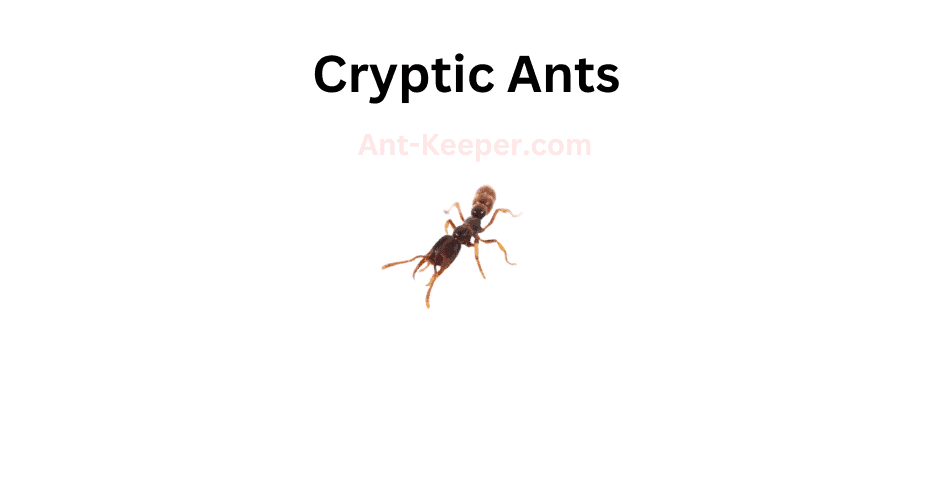
Cryptic ants are a species of ants that are known for their ability to blend in with their surroundings.
They are typically small in size, measuring only a few millimeters in length, and have a dark brown or black coloration that helps them to remain inconspicuous.
One of the most interesting features of cryptic ants is their ability to mimic the appearance of other insects.
For example, some species of cryptic ants have been observed mimicking the appearance of spiders, which helps them to avoid detection by predators that might otherwise prey on them.
Cryptic ants are also known for their highly social behavior.
They live in large colonies that can contain thousands of individuals, and they work together to gather food, care for their young, and defend their territory from other ants and predators.
Despite their small size, cryptic ants play an important role in their ecosystem.
They help to aerate the soil, control pest populations, and provide food for other animals.
In addition, they are an important food source for many birds and other predators.
Overall, cryptic ants are a fascinating species of ants that have evolved a number of unique adaptations to help them survive in their environment.
Their ability to blend in with their surroundings and mimic other insects is just one example of the many ways in which they have adapted to their surroundings over time.
18) Diacamma
Diacamma is a genus of ants belonging to the subfamily Ponerinae.
These ants are known for their unique behavior of forming long trails to forage for food.
They are also known for their aggressive behavior towards other ant species and their ability to defend their territory.
Diacamma ants are typically found in tropical and subtropical regions, living in forests and other wooded areas.
They are known to build their nests in soil, leaf litter, and rotting wood.
The nests are typically small and consist of a few chambers, with the queen residing in the central chamber.
These ants are relatively large, with workers measuring up to 10mm in length.
They are dark brown or black in color, with a shiny exoskeleton.
The mandibles of Diacamma ants are long and curved, allowing them to capture and subdue their prey.
Diacamma ants are omnivorous, feeding on a variety of insects, spiders, and other small invertebrates, as well as plant material.
They are also known to scavenge for food, and will often raid the nests of other ant species to steal their food.
One of the most interesting aspects of Diacamma ants is their social behavior.
They are known for their ability to form long trails to forage for food, with workers following a pheromone trail laid down by other members of the colony.
They are also known for their aggressive behavior towards other ant species, and will defend their territory fiercely.
Overall, Diacamma ants are fascinating creatures with unique behaviors and adaptations that allow them to thrive in their environments.
19) Dolly Ants, Dolichoderus
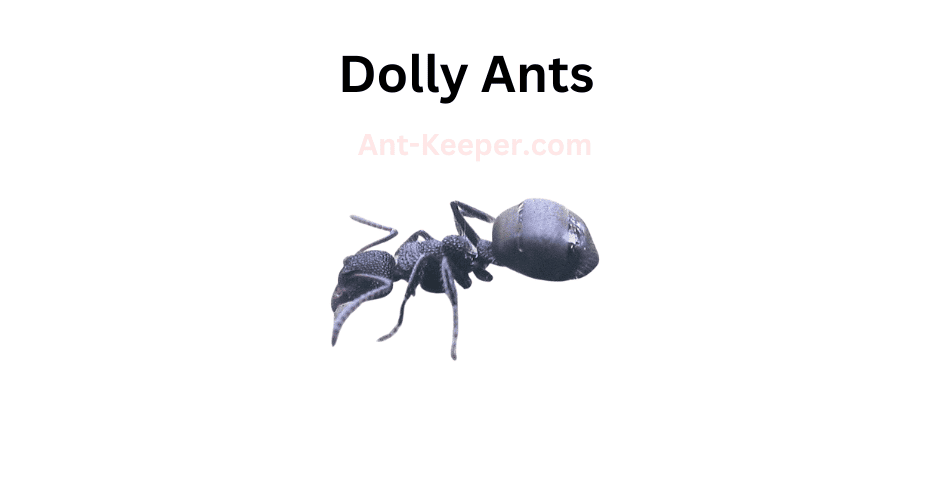
Dolly Ants, also known as Dolichoderus spp., are a species of ant that belong to the family Formicidae.
These ants are known for their distinctive elongated heads and bodies, which give them a unique appearance compared to other ant species.
Dolly Ants are typically found in forested areas, where they build their nests in soil or under rocks.
They are known to be highly social insects, living in large colonies that can contain thousands of individuals.
Within these colonies, there is a strict division of labor, with different ants taking on specific roles such as foraging, caring for the young, and defending the colony.
One interesting aspect of Dolly Ant behavior is their use of chemical communication.
These ants use pheromones to communicate with each other, leaving trails of scent that other ants can follow to locate food sources or to find their way back to the nest.
They also use pheromones to signal danger, which can trigger a coordinated response from the colony to defend against predators.
Dolly Ants are omnivorous, feeding on a variety of foods including insects, nectar, and plant sap.
They are also known to have a mutualistic relationship with certain plant species, where they protect the plants from herbivores in exchange for a source of food.
Overall, Dolly Ants are a fascinating species of ant with unique physical and behavioral characteristics.
Their social structure and use of chemical communication make them an important subject of study for researchers interested in understanding the behavior of social insects.
20) Ectomomyrmex

Ectomomyrmex is a genus of ants belonging to the subfamily Myrmicinae.
These ants are known for their unique morphology and behavior.
They are small in size, measuring between 2-4 mm in length, and have a distinctive elongated head and mandibles.
The workers of this genus are polymorphic, meaning they come in different sizes and shapes.
Ectomomyrmex ants are primarily found in tropical and subtropical regions, where they inhabit forested areas.
They are known to be arboreal, meaning they live in trees and are often found on the branches and trunks of trees.
These ants are also known to be aggressive and territorial, often engaging in battles with other ant species.
One of the most interesting aspects of Ectomomyrmex ants is their symbiotic relationship with other organisms.
They are known to form mutualistic relationships with a variety of organisms, including plants, fungi, and insects.
For example, some species of Ectomomyrmex ants are known to cultivate fungi for food, while others are known to protect plants from herbivores in exchange for nectar.
Overall, Ectomomyrmex ants are a fascinating group of ants that exhibit unique morphology and behavior.
Their symbiotic relationships with other organisms make them an important part of many ecosystems, and their aggressive nature makes them a force to be reckoned with in the ant world.
21) Emeryopone
Emeryoponebe is a species of ant that belongs to the family of Formicidae.
It is a relatively small ant, with workers measuring around 2-3 mm in length.
The ant has a dark brown or black coloration, with a shiny exoskeleton that is covered in fine hairs.
Emeryoponebe ants are known for their aggressive behavior and are often found in large colonies.
They are primarily ground-dwelling ants and can be found in a variety of habitats, including forests, grasslands, and deserts.
The ant is a predator and feeds on a variety of insects and other small invertebrates.
They are also known to scavenge on dead animals and plant material.
The ant has a unique method of hunting, where they use their mandibles to grab and hold onto their prey while injecting venom to immobilize it.
Emeryoponebe ants are also known for their ability to defend their colonies from predators and other threats.
They have a complex communication system that allows them to coordinate their attacks and defend their nests effectively.
Overall, Emeryoponebe ants are fascinating creatures that play an important role in their ecosystems.
Their aggressive behavior and unique hunting methods make them a formidable predator, while their ability to defend their colonies makes them a valuable member of their community.
22) Epelysidris
Epelysidrisbe is a species of ant that belongs to the family Formicidae.
These ants are known for their small size, measuring only a few millimeters in length.
They have a distinctive black coloration and a slender body shape, with long legs and antennae.
Epelysidrisbe ants are typically found in forested areas, where they build their nests in soil or leaf litter.
They are known to be highly social insects, living in large colonies that can contain thousands of individuals.
Within these colonies, there is a strict division of labor, with different ants performing specific tasks such as foraging, caring for the young, and defending the nest.
One of the most interesting aspects of Epelysidrisbe ants is their ability to communicate with each other using chemical signals.
They produce a variety of pheromones that can convey information about food sources, nest locations, and potential threats.
These chemical signals are crucial for maintaining the cohesion of the colony and ensuring the survival of the entire group.
Despite their small size, Epelysidrisbe ants play an important role in their ecosystem.
They are known to be efficient predators, feeding on a variety of small insects and other arthropods.
They also help to aerate the soil and distribute nutrients, which can have a positive impact on plant growth.
Overall, Epelysidrisbe ants are fascinating creatures that have much to teach us about the complexities of social behavior and communication in the animal kingdom.
23) Euponera
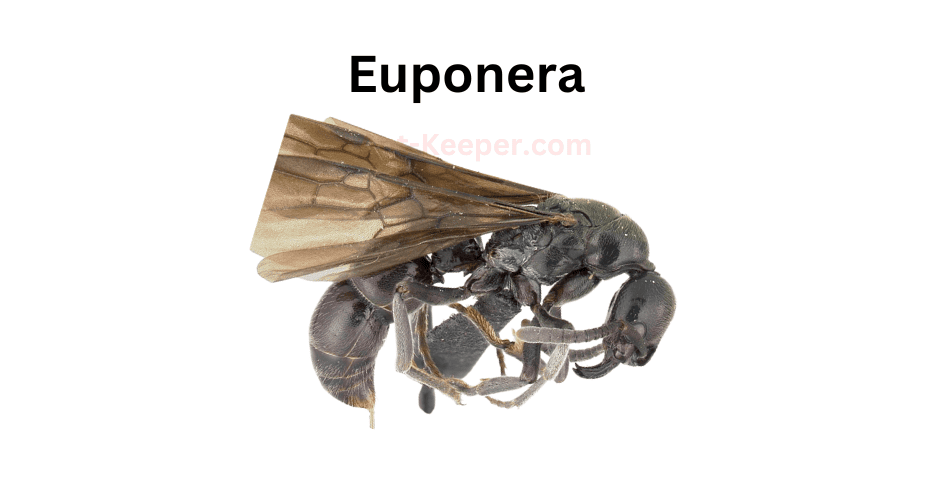
Euponerabe is a species of ant that belongs to the family of Formicidae.
These ants are known for their unique physical characteristics and behavior.
They are relatively small in size, measuring around 5-6 millimeters in length.
Their bodies are dark brown or black in color, and they have long, slender legs that allow them to move quickly and efficiently.
One of the most distinctive features of Euponerabe ants is their mandibles.
These ants have large, powerful mandibles that they use to capture prey and defend their colonies.
They are also known for their aggressive behavior, and will not hesitate to attack other ants or insects that they perceive as a threat.
Euponerabe ants are typically found in forested areas, where they build their nests in the soil or in decaying wood.
They are omnivorous, feeding on a variety of insects, fruits, and other plant materials.
They are also known to engage in trophallaxis, a behavior in which they exchange food and other nutrients with other members of their colony.
Despite their aggressive behavior, Euponerabe ants are not considered to be a major pest species.
They play an important role in their ecosystems, helping to control populations of other insects and contributing to the overall health of the forest.
They are also fascinating creatures to observe, with their unique physical characteristics and complex social behavior.
24) Harpegnathos
Harpegnathos is a genus of ants that belongs to the subfamily Ponerinae.
The ants in this genus are commonly known as trap-jaw ants due to their unique mandibles that can snap shut at incredible speeds, allowing them to capture prey or defend themselves from predators.
Harpegnathos ants are typically found in tropical and subtropical regions, where they live in underground nests.
These nests can be quite large, with multiple chambers and tunnels that are used for different purposes.
The ants are highly social and live in colonies that can contain thousands of individuals.
One of the most interesting aspects of Harpegnathos ants is their reproductive system.
Unlike most ant species, which have a single queen that produces all the offspring, Harpegnathos colonies can have multiple reproductive females.
These females, known as gamergates, are able to mate and lay eggs, allowing the colony to grow and expand.
Harpegnathos ants are also known for their unique behavior when it comes to foraging.
Unlike many other ant species, which send out large numbers of workers to search for food, Harpegnathos ants rely on a small group of specialized foragers.
These foragers are able to navigate complex terrain and locate food sources with incredible accuracy, allowing the colony to efficiently gather resources.
Overall, Harpegnathos ants are fascinating creatures that have evolved a number of unique adaptations to help them survive in their environments.
From their powerful mandibles to their complex social structures, these ants are a testament to the incredible diversity of life on our planet.
25) Crypt Ants, Hypoponera
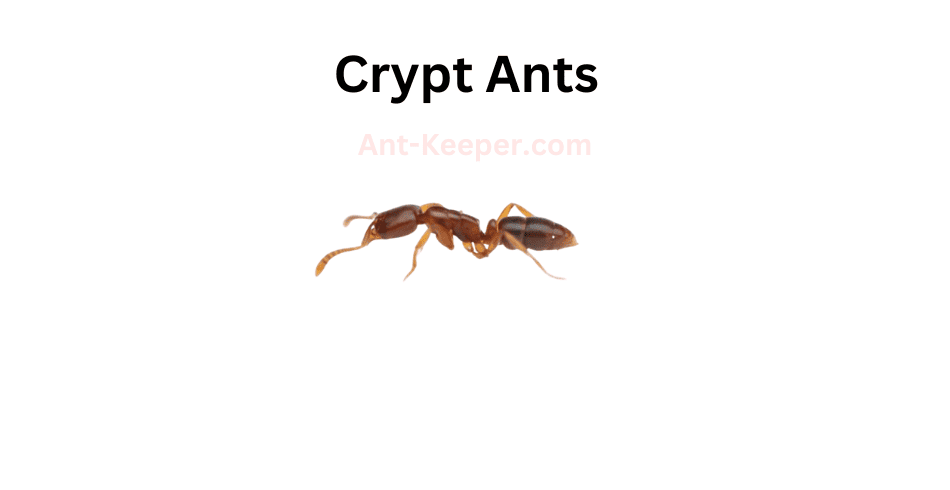
Crypt ants, also known as fungus-growing ants, are a group of ants that cultivate fungi for food.
They are found in various habitats, including forests, grasslands, and deserts.
Crypt ants are known for their unique nesting behavior, as they construct underground chambers to house their fungal gardens.
These ants have a symbiotic relationship with the fungi they cultivate.
The ants provide the fungi with a suitable environment for growth, while the fungi provide the ants with a source of food.
The ants also protect their fungal gardens from other insects and parasites.
Crypt ants are social insects, living in colonies that can range from a few dozen to several thousand individuals.
The colonies are organized into castes, with the queen being the largest and most important member.
The queen is responsible for laying eggs, while the workers are responsible for tending to the fungal gardens and caring for the young.
One interesting aspect of crypt ants is their ability to create "satellite" nests.
These nests are smaller chambers located near the main nest, and they serve as storage areas for food and as a place for the queen to lay eggs.
The satellite nests are connected to the main nest by underground tunnels, allowing the ants to move between them.
Overall, crypt ants are fascinating insects that have developed a unique way of obtaining food.
Their symbiotic relationship with fungi and their complex nesting behavior make them an important species to study in the field of entomology.
26) Razorjaw Ants, Leptogenys
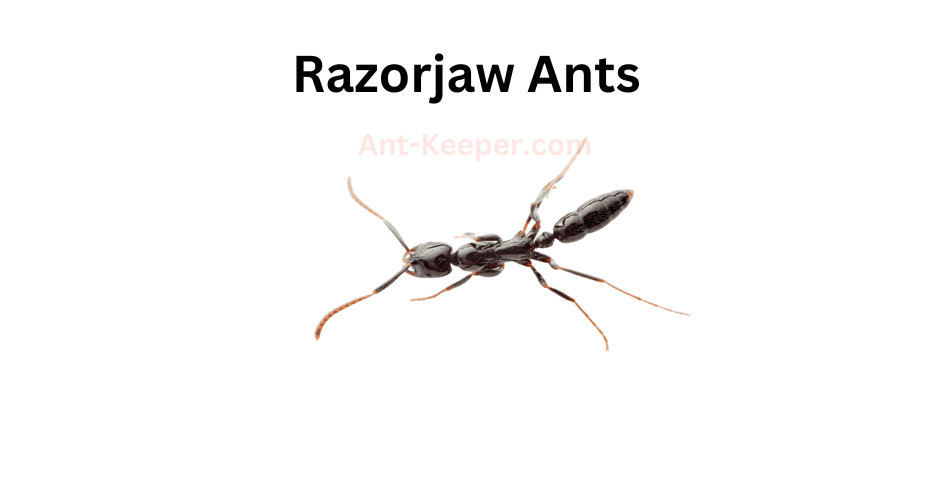
The Razorjaw Ant, also known as the Pachycondyla villosa, is a species of ant belonging to the subfamily Ponerinae.
These ants are known for their sharp mandibles, which are used for hunting and defense.
The workers of this species are typically around 8-10mm in length, while the queen can reach up to 15mm.
Razorjaw Ants are found in a variety of habitats, including forests, grasslands, and deserts.
They are known to be aggressive predators, feeding on a variety of insects and other arthropods.
These ants are also known to scavenge for food, and will even attack and kill other ant species to steal their food.
The nests of Razorjaw Ants are typically found in soil or leaf litter, and can be quite large.
The queen is responsible for laying eggs, and the workers are responsible for caring for the brood and maintaining the nest.
These ants are also known for their ability to defend their nest, and will aggressively attack any intruders.
Overall, the Razorjaw Ant is a fascinating species of ant known for its sharp mandibles, aggressive behavior, and impressive hunting skills.
27) Shield Ants, Meranoplus
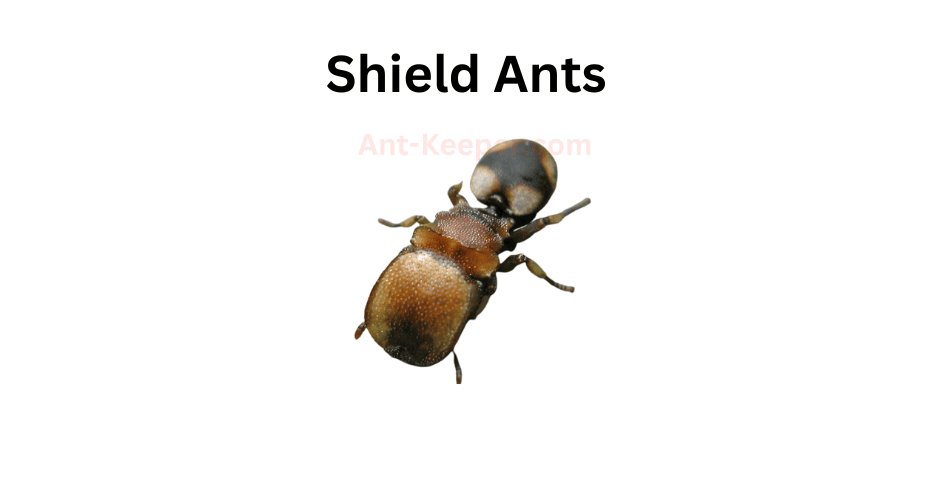
Shield ants, also known as turtle ants, are a species of ant that belong to the genus Cephalotes.
They are found in tropical regions and are known for their unique physical characteristics.
One of the most distinctive features of shield ants is their flattened, disc-shaped head.
This head shape allows them to block the entrance to their nests, protecting them from predators and other threats.
In addition, shield ants have long, spindly legs that allow them to move quickly and easily through the forest canopy.
Shield ants are social insects and live in large colonies.
They are known for their complex communication systems, which involve chemical signals and physical gestures.
They also have a division of labor within their colonies, with different ants taking on different roles such as foraging, nest building, and caring for the young.
One interesting behavior of shield ants is their use of "backpacks." Some worker ants will carry small pieces of leaves or other materials on their backs as they move through the forest.
It is believed that these backpacks may serve as camouflage or protection from predators.
Overall, shield ants are a fascinating species of ant with unique physical and behavioral adaptations that allow them to thrive in their tropical habitats.
28) Mesoponera
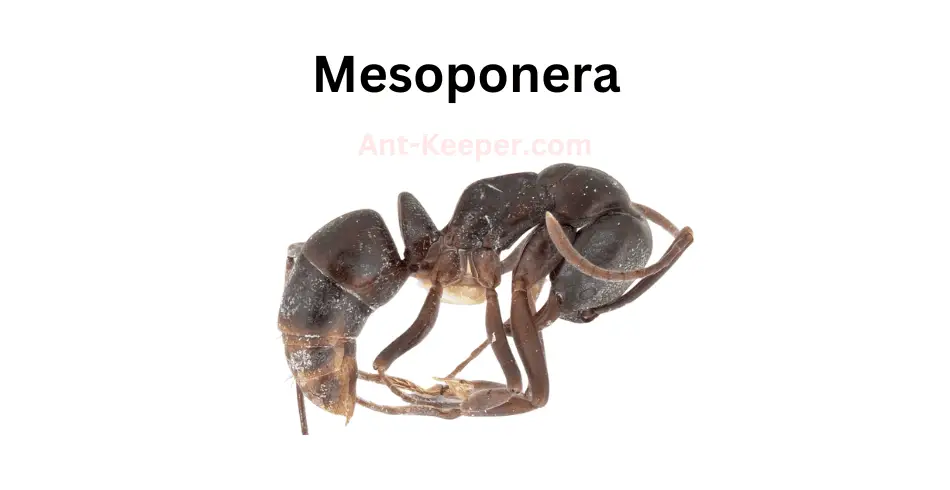
Mesoponera is a genus of ants belonging to the subfamily Ponerinae.
The species Mesoponera beccarii is a medium-sized ant with a dark brown to black coloration.
They are known for their aggressive behavior and are often found in forested areas.
Mesoponera beccarii is a solitary ant that lives in underground nests.
They are active during the day and forage for food on the forest floor.
Their diet consists of insects, spiders, and other small invertebrates.
The queen of Mesoponera beccarii is larger than the workers and is responsible for laying eggs.
The workers are responsible for caring for the brood, foraging for food, and defending the nest.
Mesoponera beccarii has a painful sting and is known to be aggressive towards intruders.
They are also known to engage in battles with other ant species over territory and resources.
Overall, Mesoponera beccarii is an interesting and important species in the ecosystem.
Their aggressive behavior and role in controlling insect populations make them an important part of the forest ecosystem.
29) Trailing Pharaoh And Timid Ants, Monomorium

The Trailing Pharaoh ant, also known as the Monomorium pharaonis, is a small, reddish-brown ant species that is commonly found in urban areas.
These ants are known for their ability to form large colonies, which can consist of thousands of individuals.
One interesting behavior of the Trailing Pharaoh ant is their tendency to trail behind other ants.
This behavior is thought to be a form of communication, as the trailing ants are able to follow the scent trail left by the leading ants.
This behavior is also used to locate food sources, as the trailing ants are able to follow the trail to the source of the food.
In contrast to the bold behavior of the Trailing Pharaoh ant, the Timid ant, also known as the Temnothorax species, is a much more cautious species.
These ants are small and brown, and are often found in wooded areas.
They are known for their timid behavior, and will often retreat into their nests when threatened.
Despite their timid nature, the Timid ant is still able to form large colonies.
They are also known for their ability to adapt to changing environments, and can be found in a variety of habitats, including forests, meadows, and even urban areas.
Overall, both the Trailing Pharaoh ant and the Timid ant are fascinating species that demonstrate unique behaviors and adaptations.
By studying these ants, scientists can gain a better understanding of the complex social behaviors and ecological roles of ants in their respective environments.
30) Myopias
Myopiasbe is a species of ant that belongs to the Formicidae family.
These ants are known for their small size, measuring only a few millimeters in length.
They have a dark brown or black coloration and a slender body shape.
Myopiasbe ants are typically found in forested areas, where they build their nests in soil or leaf litter.
These ants are known to be omnivorous, feeding on a variety of food sources including insects, nectar, and plant sap.
They are also known to be aggressive towards other ant species, often engaging in territorial disputes.
Myopiasbe ants have a unique reproductive system, with queens producing both male and female offspring.
The males are typically smaller than the females and have wings, while the females are wingless and larger in size.
These ants play an important role in their ecosystem, serving as prey for larger animals and helping to control insect populations.
They also contribute to soil health by aerating the soil and distributing nutrients.
Overall, Myopiasbe ants are a fascinating species with unique characteristics and important ecological roles.
31) Myopopone
Myopoponebe is a species of ant that belongs to the family Formicidae.
These ants are known for their small size and unique physical characteristics.
They have a dark brown or black coloration and are typically less than 2 millimeters in length.
One of the most distinctive features of Myopoponebe ants is their mandibles.
These ants have long, curved mandibles that are used for hunting and defense.
They are also known for their ability to climb vertical surfaces, thanks to their strong legs and adhesive pads on their feet.
Myopoponebe ants are typically found in forested areas, where they live in small colonies.
They are known for their aggressive behavior and will defend their territory fiercely against other ants and predators.
Despite their small size, Myopoponebe ants play an important role in their ecosystem.
They are known to prey on other insects and help to control their populations.
They also help to aerate the soil and distribute nutrients, which can benefit plant growth.
Overall, Myopoponebe ants are a fascinating species that have adapted to their environment in unique ways.
Their small size and aggressive behavior make them a force to be reckoned with in the forest ecosystem.
32) Mite-Eating Ants, Myrmecina
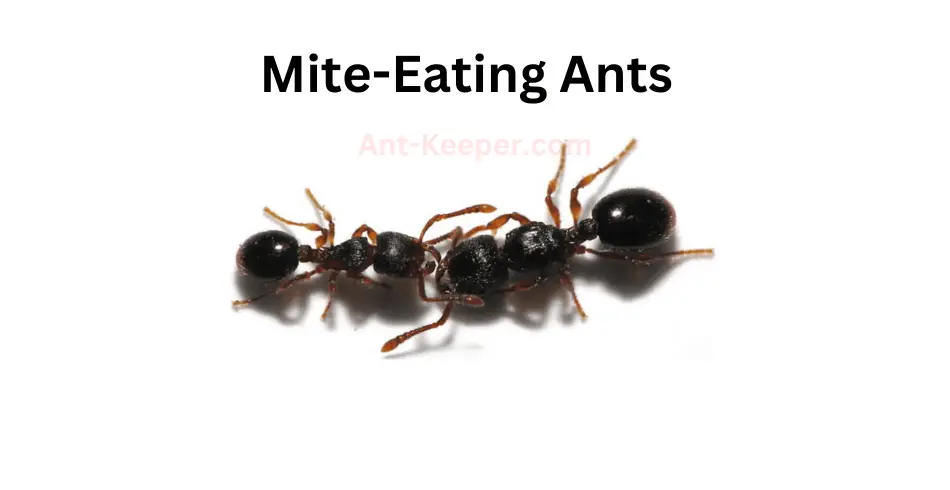
The Mite-Eating Ant, also known as the Pheidole megacephala, is a species of ant that is commonly found in tropical and subtropical regions around the world.
These ants are known for their unique feeding habits, as they primarily feed on mites and other small arthropods.
The Mite-Eating Ant is a relatively small ant, with workers measuring between 2-3mm in length.
They have a distinctive head shape, with a large and elongated head that is almost as wide as their thorax.
Their bodies are typically a reddish-brown color, with darker legs and antennae.
These ants are highly social, living in large colonies that can contain thousands of individuals.
The colonies are typically divided into two groups: workers and reproductive individuals.
The workers are responsible for foraging for food, caring for the young, and defending the colony, while the reproductive individuals are responsible for producing offspring.
One of the most interesting aspects of the Mite-Eating Ant is their feeding habits.
These ants are specialized predators, feeding almost exclusively on mites and other small arthropods.
They use their large mandibles to capture and kill their prey, and then carry it back to the colony to be consumed.
In addition to their unique feeding habits, the Mite-Eating Ant is also known for its ability to adapt to a wide range of environments.
They are able to thrive in both natural and urban environments, and can be found in a variety of habitats, including forests, grasslands, and even in homes and buildings.
Overall, the Mite-Eating Ant is a fascinating species of ant that has adapted to a unique niche in the ecosystem.
Their specialized feeding habits and ability to thrive in a variety of environments make them an important species to study and understand.
33) Myrmoteras
Myrmoterasbe is a fascinating ant species that belongs to the subfamily of Myrmicinae.
These ants are known for their unique physical characteristics, including their elongated mandibles and slender bodies.
They are typically small in size, measuring only a few millimeters in length.
One of the most interesting aspects of Myrmoterasbe ants is their behavior.
They are known to be highly aggressive and territorial, often engaging in fierce battles with other ant colonies.
They are also skilled hunters, using their powerful mandibles to capture and subdue prey.
Despite their aggressive nature, Myrmoterasbe ants are also highly social creatures.
They live in large colonies, with each individual ant playing a specific role in the community.
Some ants are responsible for foraging and gathering food, while others are tasked with caring for the young or defending the colony from predators.
Overall, Myrmoterasbe ants are a fascinating species that continue to intrigue scientists and researchers around the world.
Their unique physical characteristics and complex social behavior make them a valuable subject of study for those interested in the natural world.
34) Mystrium
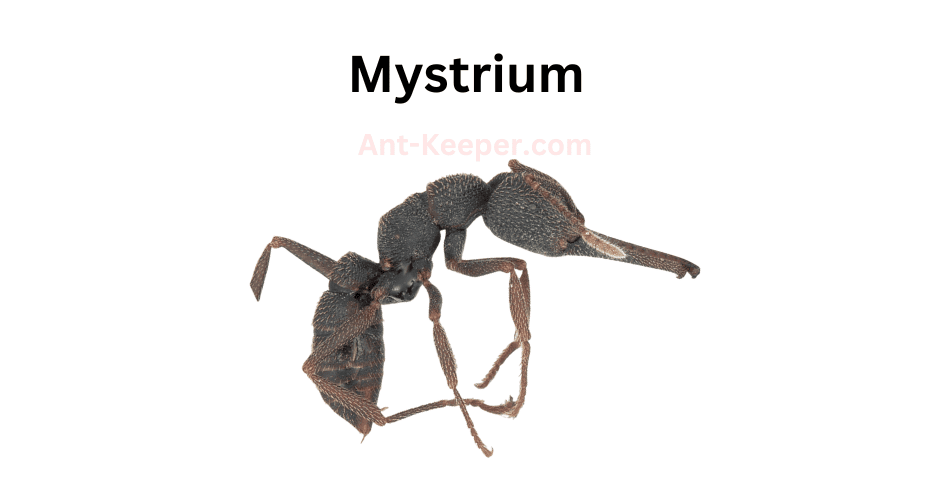
Mystrium is a genus of ants that belongs to the family Formicidae.
These ants are known for their unique morphology and behavior.
They are medium-sized ants, with workers ranging from 3 to 6 mm in length.
The head of the ant is elongated and narrow, with large mandibles that are used for hunting and defense.
The antennae are long and slender, with 12 segments.
Mystrium ants are found in a variety of habitats, including forests, grasslands, and deserts.
They are known for their aggressive behavior and are often seen attacking other ant species.
They are also known to be solitary hunters, with workers often hunting alone or in small groups.
One of the most interesting aspects of Mystrium ants is their reproductive behavior.
Unlike most ants, Mystrium ants have a unique reproductive system where the queen produces both male and female offspring.
This is known as haplodiploidy, where males are haploid and females are diploid.
The males are produced from unfertilized eggs, while the females are produced from fertilized eggs.
Mystrium ants are also known for their ability to communicate with each other through chemical signals.
They use pheromones to mark trails, identify nestmates, and signal danger.
They also use sound to communicate, with workers producing a high-pitched sound when they encounter a threat.
Overall, Mystrium ants are fascinating creatures that have unique morphology, behavior, and reproductive systems.
They play an important role in their ecosystems and are a valuable subject of study for scientists.
35) Crazy Ants, Nylanderia

Crazy ants, also known as Nylanderia fulva, are a species of ant that belong to the family Formicidae.
They are small in size, measuring only about 2.2 to 3 mm in length, and are reddish-brown in color.
These ants are known for their erratic and unpredictable behavior, hence the name "crazy ants."
Crazy ants are native to South America, but have since spread to other parts of the world, including North America, Asia, and Australia.
They are highly adaptable and can thrive in a variety of environments, including urban areas, forests, and grasslands.
One of the most notable characteristics of crazy ants is their ability to form large colonies with multiple queens.
This allows them to quickly establish themselves in new areas and outcompete other ant species.
Crazy ants are also known for their aggressive behavior towards other insects and animals, including humans.
In addition to their aggressive behavior, crazy ants are also known for their ability to cause damage to electrical equipment.
They are attracted to electrical currents and can easily short-circuit electronics, causing damage and potentially starting fires.
Despite their small size, crazy ants are a formidable species that can have a significant impact on their environment.
As they continue to spread to new areas, it is important to monitor their behavior and take steps to control their populations in order to minimize their impact on ecosystems and human infrastructure.
36) Trap-Jaw Ants, Odontomachus

Trap-jaw ants are a species of ants that belong to the genus Odontomachus.
These ants are known for their unique and powerful mandibles, which they use to capture prey and defend their colonies.
The mandibles of trap-jaw ants are capable of closing at incredible speeds, reaching up to 140 miles per hour.
This allows them to snap their jaws shut with incredible force, which can stun or kill their prey.
Trap-jaw ants are found in a variety of habitats, including forests, grasslands, and deserts.
They are typically active during the day and are known to be highly territorial.
These ants are also known for their ability to jump, which they use to escape danger or to capture prey.
Trap-jaw ants are omnivorous, meaning that they eat both plant and animal matter.
They are known to feed on a variety of insects, including other ants, as well as nectar and other sweet substances.
These ants are also known to be scavengers, feeding on dead insects and other organic matter.
The colonies of trap-jaw ants are typically small, with only a few hundred individuals.
However, they are highly organized and have a strict social hierarchy.
The queen is the largest member of the colony and is responsible for laying eggs.
The workers, which are all female, are responsible for foraging, caring for the young, and defending the colony.
Overall, trap-jaw ants are fascinating creatures that have evolved unique adaptations to help them survive in their environments.
Their powerful mandibles and jumping abilities make them formidable predators, while their social organization allows them to work together to protect their colonies and ensure their survival.
37) Odontoponera
Odontoponera is a genus of ants belonging to the subfamily Ponerinae.
The species Odontoponera rabe is a relatively large ant, measuring up to 15 millimeters in length.
It has a dark brown or black coloration and a slender, elongated body shape.
Odontoponera rabe is known for its aggressive behavior and powerful mandibles, which it uses to capture and subdue prey.
It is a solitary hunter, often foraging alone in search of insects, spiders, and other small invertebrates.
Despite its solitary nature, Odontoponera rabe is also capable of forming small colonies, with a single queen and a few workers.
Like other ants in the Ponerinae subfamily, Odontoponera rabe is primarily active during the night.
It is a ground-dwelling species, often found in forested areas or other natural habitats.
It is also known to occasionally enter human dwellings in search of food.
Overall, Odontoponera rabe is a fascinating and unique species of ant, with a distinctive appearance and behavior.
Its aggressive nature and solitary hunting habits make it a formidable predator in its natural habitat.
38) Oecophylla
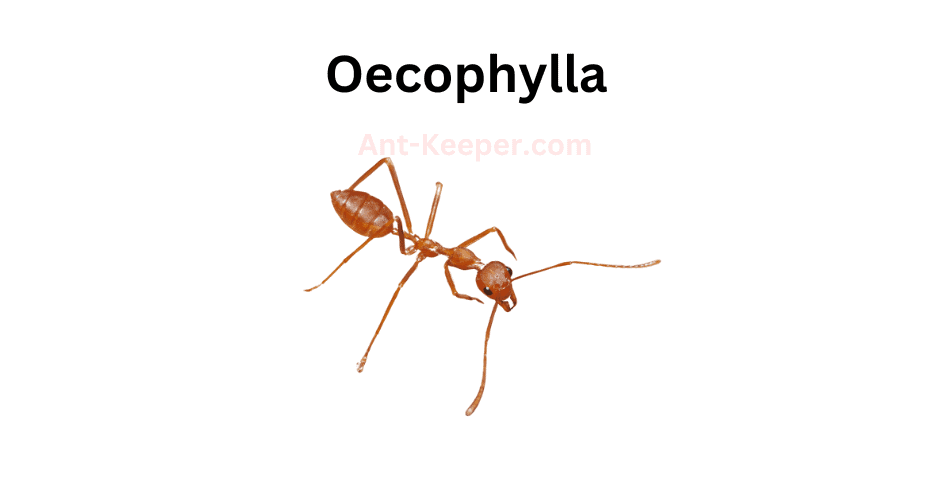
Oecophylla is a genus of ants that belongs to the family Formicidae.
The most well-known species in this genus is Oecophylla smaragdina, commonly known as the weaver ant.
These ants are known for their unique ability to weave leaves together to create nests, which can be found in trees and shrubs.
Oecophylla ants are typically green in color, with long, slender bodies and large mandibles.
They are highly social insects, living in colonies that can contain thousands of individuals.
The colonies are organized into a caste system, with workers responsible for foraging, nest building, and caring for the young, while the queen is responsible for laying eggs.
One of the most interesting aspects of Oecophylla ants is their use in agriculture.
These ants are known to protect certain plants from herbivores, such as caterpillars and beetles, in exchange for a sugary substance produced by the plant.
This mutually beneficial relationship is known as mutualism and is an important example of how different species can work together to survive.
Overall, Oecophylla ants are fascinating creatures that play an important role in their ecosystems.
Their unique nest-building abilities and agricultural partnerships make them a valuable species to study and appreciate.
39) Parvaponera
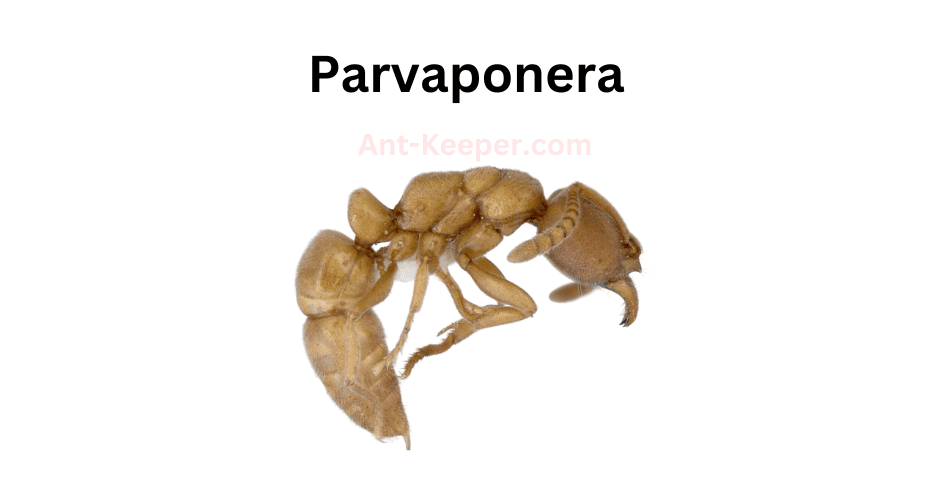
Parvaponerabe is a species of ant that belongs to the family Formicidae.
It is a relatively small ant, with workers measuring around 4-5 millimeters in length.
The ant has a dark brown or black coloration, with a shiny exoskeleton that is covered in fine hairs.
Parvaponerabe ants are known for their aggressive behavior and are often found in large colonies.
They are primarily ground-dwelling ants, but can also be found in trees and other vegetation.
The ants are omnivorous, feeding on a variety of insects, fruits, and seeds.
One unique characteristic of Parvaponerabe ants is their ability to produce formic acid, which they use as a defense mechanism against predators.
When threatened, the ants will release the formic acid from their bodies, which can cause irritation and pain to potential predators.
Parvaponerabe ants are also known for their social behavior, with a clear division of labor among the different members of the colony.
The queen is responsible for laying eggs, while the workers are responsible for foraging, caring for the young, and defending the colony.
Overall, Parvaponerabe ants are an important part of many ecosystems, playing a key role in controlling insect populations and contributing to soil health.
40) Platythyrea
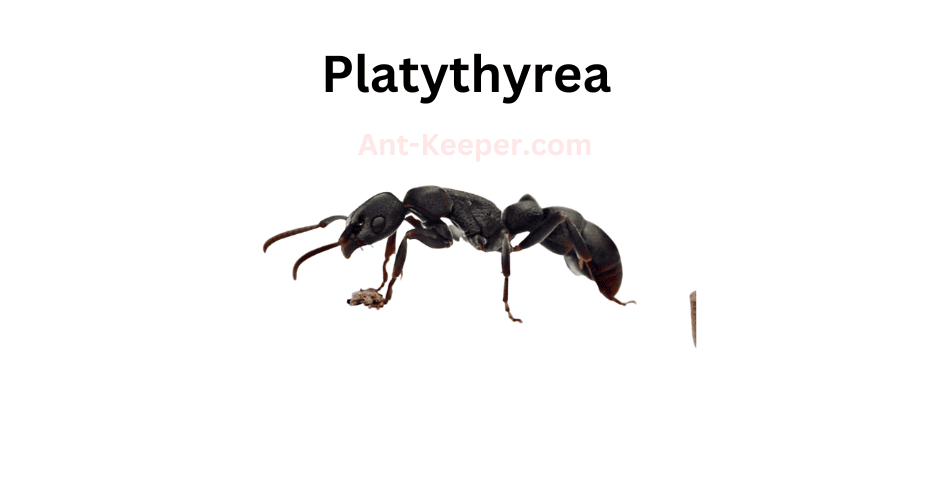
Platythyreabe is a species of ant that belongs to the family Formicidae.
These ants are known for their unique physical characteristics, including their flattened bodies and elongated mandibles.
Platythyreabe ants are typically found in forested areas and are known to be active foragers, often hunting for small insects and other invertebrates.
One of the most interesting aspects of Platythyreabe ants is their social behavior.
These ants live in colonies that are typically composed of several hundred individuals.
Within these colonies, there is a strict hierarchy, with a single queen ant at the top.
The queen is responsible for laying eggs, while the other ants in the colony are responsible for caring for the young and maintaining the nest.
Platythyreabe ants are also known for their aggressive behavior.
When threatened, these ants will use their elongated mandibles to defend themselves and their colony.
They are also known to release a chemical signal that alerts other ants in the colony to the presence of a threat.
Despite their aggressive behavior, Platythyreabe ants play an important role in their ecosystem.
They help to control populations of small insects and other invertebrates, and they also serve as a food source for larger predators.
Overall, Platythyreabe ants are fascinating creatures that offer a unique glimpse into the complex world of social insects.
41) Spiny Ants, Polyrhachis
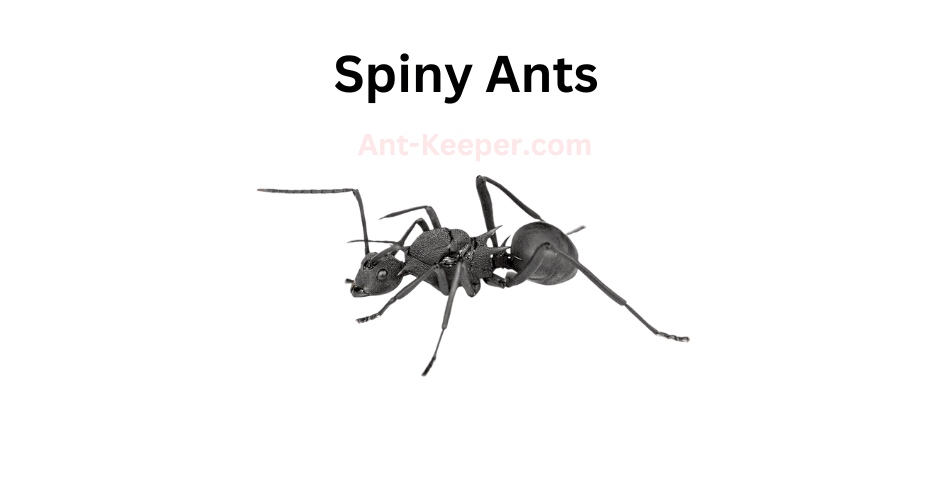
Spiny ants, also known as Polyrhachis sp., are a species of ants that belong to the family Formicidae.
These ants are known for their unique appearance, with spines covering their bodies that serve as a form of protection against predators.
Spiny ants are typically black or dark brown in color and range in size from 4 to 10 millimeters in length.
They are found in a variety of habitats, including forests, grasslands, and urban areas.
These ants are known for their aggressive behavior and will defend their nests fiercely.
Spiny ants are omnivores, feeding on a variety of food sources including insects, nectar, and honeydew.
They are also known to tend to aphids, protecting them from predators in exchange for the sweet honeydew they produce.
These ants are social insects, living in colonies that can range in size from a few dozen to several thousand individuals.
The colony is typically led by a queen ant, who is responsible for laying eggs and maintaining the colony's population.
Spiny ants play an important role in their ecosystems, serving as both predators and prey.
They help to control the populations of other insects and provide food for larger animals such as birds and reptiles.
Overall, spiny ants are a fascinating species of ants that are known for their unique appearance and aggressive behavior.
They play an important role in their ecosystems and are an important part of the natural world.
42) Porthole Ants, Ponera
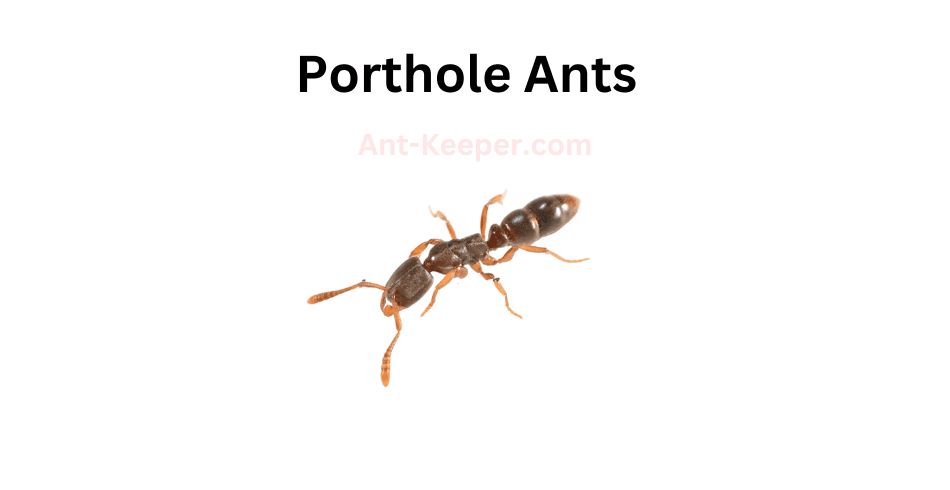
Porthole ants, also known as Temnothorax spp., are a genus of small ants that are commonly found in forested areas.
These ants are known for their unique nesting behavior, as they create their nests in small cavities or "portholes" in trees, rocks, or other natural structures.
Porthole ants are typically less than 5mm in length and have a dark brown or black coloration.
They are social insects and live in colonies that can range from a few dozen to several hundred individuals.
The colonies are typically led by a single queen, who is responsible for laying eggs and maintaining the colony's reproductive population.
One of the most interesting aspects of porthole ants is their nesting behavior.
Unlike many other ant species, porthole ants do not create large underground nests.
Instead, they seek out small cavities in natural structures and use them as their nesting sites.
These cavities can be as small as a few millimeters in diameter and are often located high up in trees or on rocky outcroppings.
Porthole ants are also known for their ability to adapt to changing environmental conditions.
They are able to quickly relocate their nests if their current nesting site becomes unsuitable due to factors such as flooding or predation.
This adaptability allows them to thrive in a variety of habitats, from temperate forests to arid deserts.
Overall, porthole ants are a fascinating and unique species of ant that have adapted to their environment in a variety of ways.
Their nesting behavior and adaptability make them an important species to study for understanding the ecology of forested areas.
43) Pristomyrmex
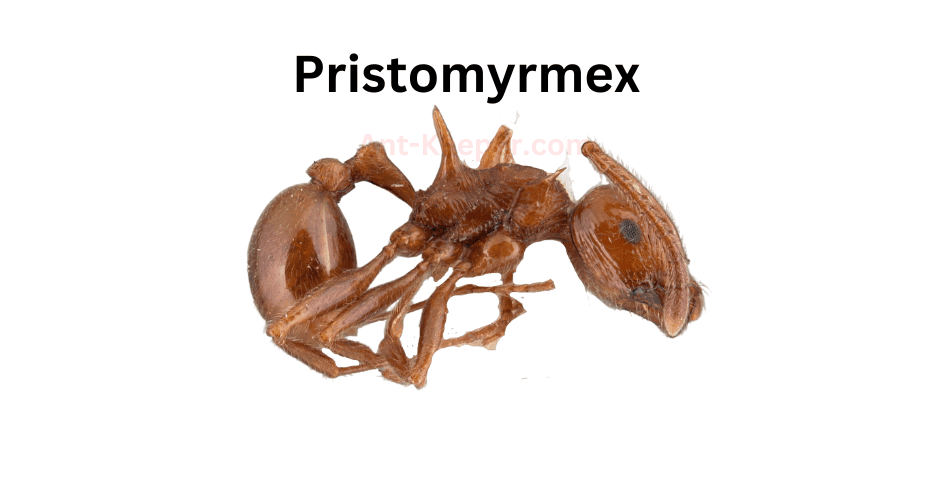
Pristomyrmex is a genus of ants that belongs to the subfamily Myrmicinae.
The ants in this genus are small in size, measuring between 2-4mm in length.
They are known for their distinctive appearance, with a slender and elongated body shape, and a narrow waist that separates the thorax and abdomen.
Pristomyrmex ants are typically found in forested areas, where they nest in soil or leaf litter.
They are known to be aggressive predators, feeding on other insects and small invertebrates.
They are also known to have a mutualistic relationship with certain plant species, where they protect the plants from herbivores in exchange for food and shelter.
One species of Pristomyrmex, Pristomyrmex punctatus, is known for its unique behavior of "playing dead" when threatened.
When disturbed, these ants will curl up their legs and antennae and remain motionless, resembling a dead insect.
This behavior is thought to be a defense mechanism against predators.
Overall, Pristomyrmex ants are an important part of forest ecosystems, playing a role in both predation and mutualism.
Their unique appearance and behavior make them an interesting subject for study and observation.
44) Pseudoneoponera
Pseudoneoponerabe is a species of ant that belongs to the family Formicidae.
These ants are known for their unique physical characteristics and behavior.
They are small in size, measuring only a few millimeters in length, and have a dark brown or black coloration.
One of the most distinctive features of Pseudoneoponerabe ants is their mandibles.
These ants have large, powerful mandibles that they use to capture prey and defend their colonies.
They are also known for their aggressive behavior, and will not hesitate to attack intruders that threaten their nests.
Pseudoneoponerabe ants are typically found in forested areas, where they build their nests in soil or leaf litter.
They are omnivorous, feeding on a variety of insects, small animals, and plant material.
They are also known to engage in trophallaxis, a behavior in which they exchange food and other substances with other members of their colony.
Despite their small size, Pseudoneoponerabe ants play an important role in their ecosystem.
They help to control populations of other insects and small animals, and their nests provide shelter for other organisms.
However, like many other ant species, they can also be considered pests when they invade human structures or agricultural areas.
Overall, Pseudoneoponerabe ants are fascinating creatures that have adapted to survive in a variety of environments.
Their unique physical characteristics and behavior make them an important part of the natural world.
45) Recurvidris
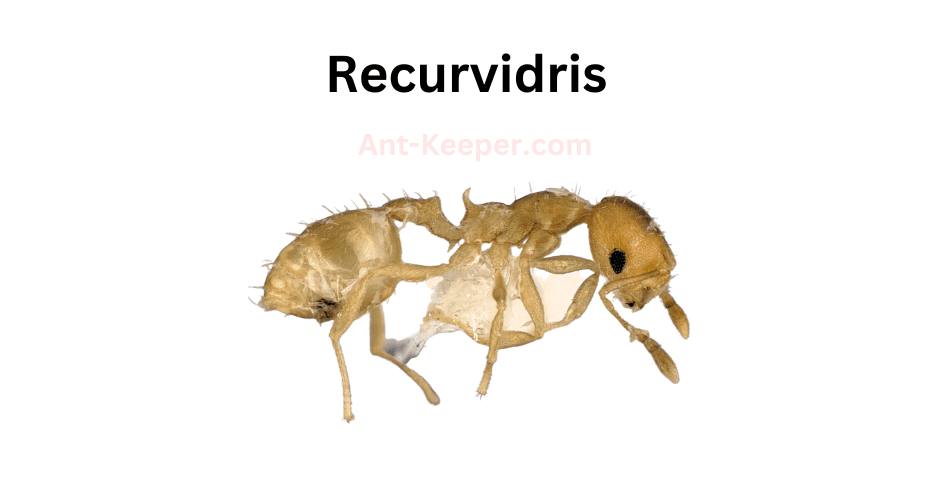
Recurvidrisbe is a species of ant that belongs to the Formicidae family.
These ants are known for their small size, typically measuring between 1.5 and 2.5 millimeters in length.
They have a dark brown or black coloration and a slender body shape.
Recurvidrisbe ants are commonly found in forested areas, where they build their nests in soil or leaf litter.
They are known to be highly social insects, living in colonies that can contain thousands of individuals.
Within these colonies, there is a clear division of labor, with different ants taking on specific roles such as foraging, caring for the young, and defending the nest.
One interesting aspect of Recurvidrisbe ants is their ability to communicate with each other through the use of pheromones.
These chemical signals are used to mark trails, identify nestmates, and coordinate group activities.
Recurvidrisbe ants are also known for their aggressive behavior, particularly when defending their nest from predators or other ant species.
Overall, Recurvidrisbe ants are fascinating creatures that play an important role in their ecosystem.
Their social behavior and communication strategies make them a valuable subject of study for scientists interested in understanding the behavior of social insects.
46) Sphinctomyrmex
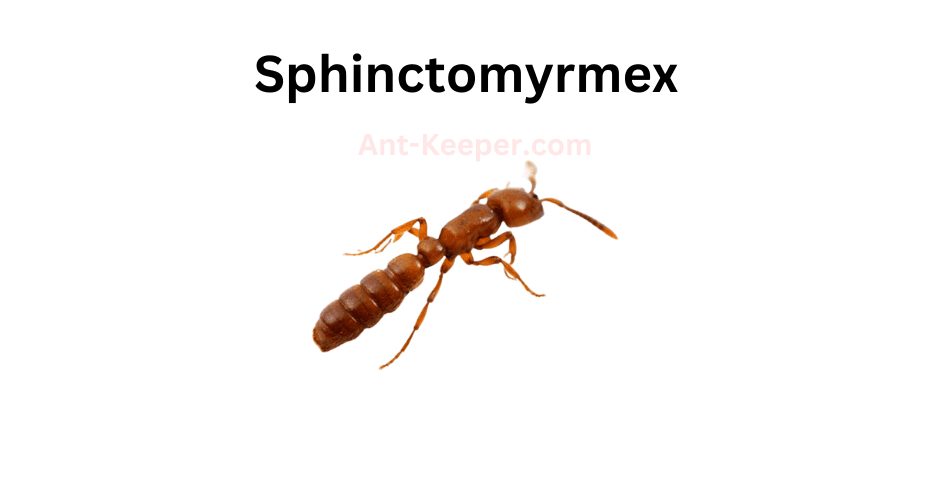
Sphinctomyrmex is a genus of ants that belongs to the subfamily Myrmicinae.
These ants are known for their unique morphology, which includes a distinct constriction between the thorax and abdomen, giving them their common name of "waist ants."
Sphinctomyrmex ants are relatively small, with workers measuring between 2-5mm in length.
They are typically reddish-brown in color, with a shiny exoskeleton.
These ants are known for their aggressive behavior, and will readily defend their nests against intruders.
One of the most interesting aspects of Sphinctomyrmex ants is their reproductive strategy.
Unlike many other ant species, Sphinctomyrmex queens do not mate with multiple males.
Instead, they mate with a single male and store his sperm in a specialized organ called the spermatheca.
This allows the queen to produce offspring with a high degree of relatedness, which may confer certain advantages in terms of colony cohesion and cooperation.
Sphinctomyrmex ants are found in a variety of habitats, including forests, grasslands, and deserts.
They are known to forage on the ground and in the understory, and will feed on a variety of food sources, including insects, nectar, and honeydew.
Overall, Sphinctomyrmex ants are a fascinating group of insects that exhibit a number of unique traits and behaviors.
Their distinctive morphology, aggressive behavior, and unusual reproductive strategy make them a subject of interest for researchers and ant enthusiasts alike.
47) Miniature Trap-Jaw Ants, Strumigenys
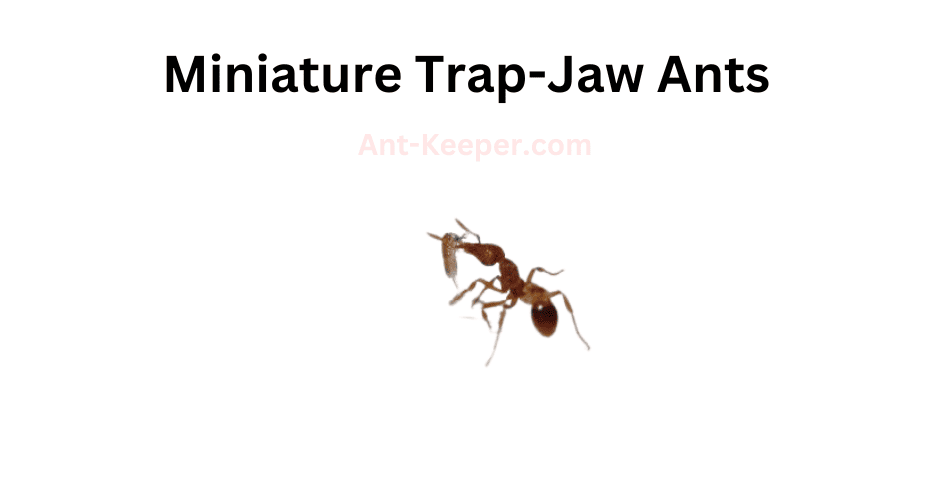
The Miniature Trap-Jaw Ants, scientifically known as Odontomachus sp., are a species of ants that belong to the family Formicidae.
These ants are known for their unique and powerful mandibles, which they use to capture prey and defend their colonies.
The Miniature Trap-Jaw Ants are relatively small in size, measuring only a few millimeters in length.
They have a dark brown or black coloration and a slender body shape.
Their most distinctive feature is their mandibles, which are elongated and can snap shut with incredible force.
These mandibles are used to capture prey, crush seeds, and defend the colony against predators.
The Miniature Trap-Jaw Ants are found in a variety of habitats, including forests, grasslands, and deserts.
They are known to be active during the day and are often seen foraging for food.
These ants are omnivorous and feed on a variety of food sources, including insects, nectar, and seeds.
The Miniature Trap-Jaw Ants are social insects and live in colonies that can range in size from a few dozen to several thousand individuals.
The colony is typically led by a queen, who is responsible for laying eggs and maintaining the colony's population.
The workers are responsible for foraging, caring for the young, and defending the colony.
Overall, the Miniature Trap-Jaw Ants are fascinating insects that have evolved unique adaptations to survive in their environment.
Their powerful mandibles and social behavior make them an important part of many ecosystems.
48) Tapinoma

Tapinoma is a genus of ants that belongs to the family Formicidae.
The species Tapinoma is a small ant that measures about 2-3 mm in length.
They are commonly found in urban and suburban areas, and are known to invade homes and buildings in search of food and shelter.
Tapinoma ants are light brown in color and have a slender body with long legs.
They have a distinctively shaped head that is wider than their thorax, and they possess a pair of antennae that are bent at a right angle.
These ants are known for their ability to form large colonies, which can consist of thousands of individuals.
Tapinoma ants are omnivorous and feed on a variety of food sources, including insects, nectar, and honeydew.
They are also known to scavenge for food in garbage cans and other waste areas.
These ants are attracted to sweet and sugary substances, and will often invade kitchens and pantries in search of food.
Tapinoma ants are not known to be aggressive towards humans, but they can become a nuisance when they invade homes and buildings.
They are known to build their nests in wall voids, under floors, and in other hidden areas.
If left unchecked, these ants can cause damage to structures and can contaminate food sources.
Overall, Tapinoma ants are a common pest in many parts of the world.
While they are not harmful to humans, they can be a nuisance when they invade homes and buildings.
Proper pest control measures can help to prevent infestations and keep these ants at bay.
49) Pavement Ants, Tetramorium
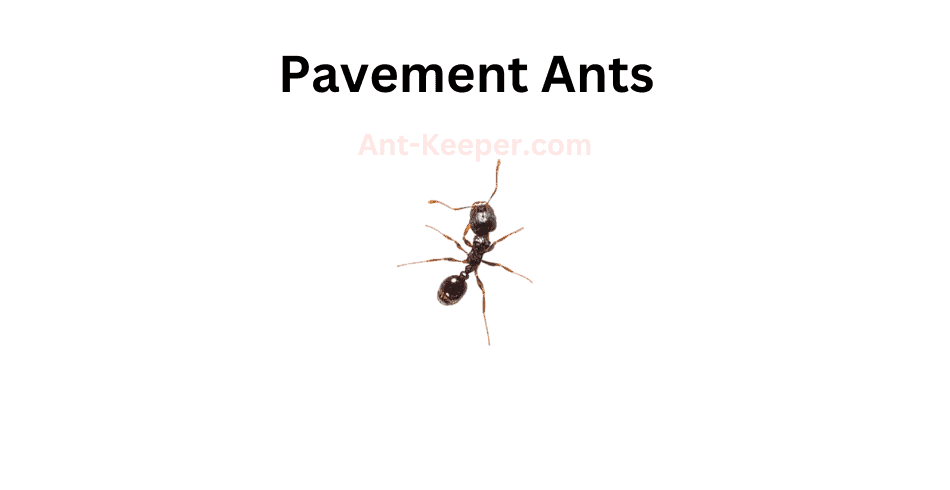
Pavement ants, also known as Tetramorium caespitum, are a species of ant that belong to the family Formicidae.
These ants are commonly found in urban and suburban areas, where they build their nests in cracks and crevices in pavement, sidewalks, and buildings.
Pavement ants are small in size, measuring between 2.5 to 4 mm in length.
They are typically dark brown or black in color, with lighter colored legs and antennae.
These ants are known for their aggressive behavior and will defend their nests fiercely against intruders.
Pavement ants are omnivorous, feeding on a variety of foods including insects, seeds, and sweet substances such as honeydew and nectar.
They are also known to scavenge for food in garbage cans and other waste areas.
Pavement ants are social insects, living in colonies that can range in size from a few hundred to several thousand individuals.
The colony is typically led by a queen ant, who is responsible for laying eggs and maintaining the colony.
Pavement ants are considered a nuisance pest, as they can invade homes and buildings in search of food and shelter.
They are also known to cause damage to pavement and other structures by excavating soil and creating tunnels.
Overall, pavement ants are a common and adaptable species of ant that play an important role in urban ecosystems.
While they may be a nuisance to humans, they are an important food source for many other animals and help to maintain the balance of the ecosystem.
50) Old World Slender Ants, Tetraponera
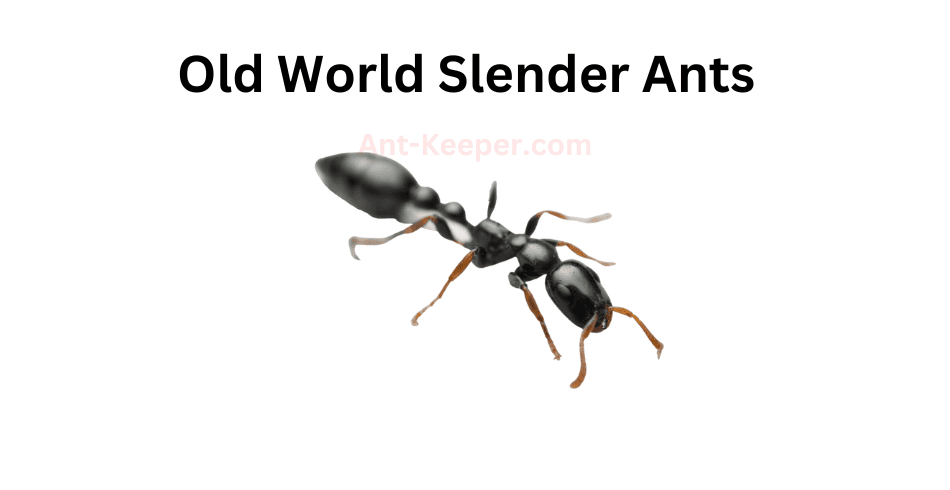
The Old World Slender Ants are a group of ants belonging to the genus Leptomyrmex.
They are found in various regions of the world, including Asia, Africa, and Australia.
These ants are known for their slender and elongated bodies, which are typically brown or black in color.
Old World Slender Ants are social insects that live in colonies.
The colonies are typically small, with only a few hundred individuals.
The ants are highly organized and have a strict hierarchy, with a queen at the top and workers and soldiers below her.
The diet of Old World Slender Ants consists mainly of insects and other small invertebrates.
They are also known to feed on nectar and honeydew produced by aphids and other insects.
Old World Slender Ants are known for their aggressive behavior and are capable of inflicting painful stings.
They are also known to defend their colonies fiercely against intruders.
Overall, the Old World Slender Ants are an interesting and important group of ants that play an important role in their ecosystems.
Their unique physical characteristics and social behavior make them a fascinating subject for scientific study.
51) Pharaoh Ants, Monomorium Pharaonis
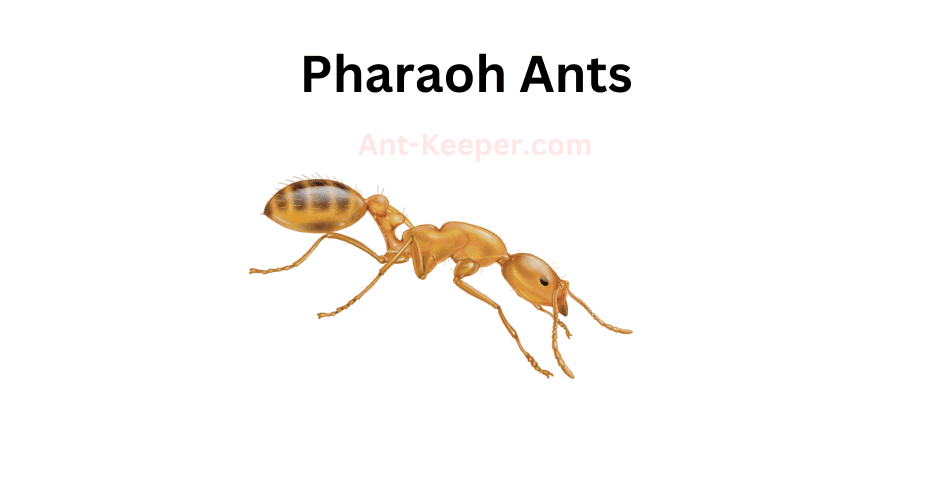
Pharaoh ants, scientifically known as Monomorium pharaonis, are small, yellowish-brown ants that measure about 2 mm in length.
They are commonly found in indoor environments such as homes, hospitals, and commercial buildings.
Pharaoh ants are known for their ability to form large colonies with multiple queens.
These colonies can contain thousands of workers and can quickly infest a building.
They are also known for their ability to adapt to changing environments and can easily relocate their nests if disturbed.
Pharaoh ants are omnivorous and feed on a variety of foods including sweets, meats, and other insects.
They are also known to feed on human fluids such as blood and wound exudates.
Due to their small size and ability to hide in small crevices, pharaoh ants can be difficult to control.
They are known to be resistant to many common insecticides and can quickly rebound after treatment.
Pharaoh ants are also a concern in healthcare settings as they can transmit diseases such as salmonella and staphylococcus.
They can also contaminate sterile equipment and supplies.
Overall, pharaoh ants are a common pest in indoor environments and can be difficult to control.
It is important to seek professional pest control services to effectively manage infestations.
Check Out Some Of Our Other Ants By Location Posts
| Types Of Ants In Washington, United States | Washington, located in the Pacific Northwest region of the United States, is a diverse and vibrant state known for its stunning natural beauty. The region ... |
| Types Of Ants In Oman | Nestled in the southeastern coast of the Arabian Peninsula lies the Sultanate of Oman, a country known for its diverse and unique environment. With a ... |
| Types Of Ants In Cameroon | Cameroon, located in Central Africa, is a country known for its diverse geography and rich wildlife. The country is bordered by Nigeria to the west, ... |
| Types Of Ants In Antigua And Barbuda | Antigua and Barbuda, a small country located in the eastern Caribbean region, is known for its stunning natural beauty and tropical climate. The country is ... |
| Types Of Ants In Belgium | Belgium, a small country located in Western Europe, is home to a diverse range of environments and weather patterns. From the sandy beaches of the ... |
